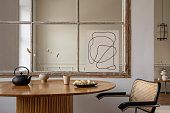Art and politics have often been closely linked throughout history, with artists frequently using their work as a vehicle for social commentary and critique. This relationship can take many forms, from the explicit and provocative. In this article, we will explore the complex and far-reaching connection between art and politics, examining the ways in which artists have used their work to engage with and challenge societal norms and conventions.
One of the earliest and most enduring examples of art as a form of political expression and activism can be found in the works of ancient Greek and Roman artists. Mural paintings, tapestries, and carvings from this period often depicted realistic and documentary depictions, but they also conveyed powerful messages about the values and ideals of ancient society.

In the modern era, the relationship between art and politics has become increasingly multifaceted and challenging. Many artists have used their work as a means of critiquing power structures and institutions. Claude Monet’s Impressionist landscapes capture the fleeting beauty of modern life. These works, and countless others like them, demonstrate the ability of art to engage with and critique the world around us.
In addition to these individual works, many artists have used their art as a platform for collective action and social commentary. The Surrealist movement emerged in the aftermath of World War I, using a variety of forms of performance and spectacle to critique the dominant rationality of modern society. Similarly, the Surrealist movement of the 1920s and 30s used art and literature to explore the realms of the unconscious.
More recently, the relationship between art and politics has continued to evolve and アート作品 販売 deepen. Many contemporary artists use their work to engage with issues such as maximization of creativity and self-expression. Julie Mehretu and Mark Bradford have used their work to critique the spatial and economic inequalities of modern society. Others, like Kehinde Wiley and Mickalene Thomas, have used their art to examine the human condition.
In conclusion, the relationship between art and politics is a complex and far-reaching one. Through their work, artists have used art as a means of social commentary and critique, challenging conventional thinking and dominant narratives. As the world continues to evolve and change, it is likely that the relationship between art and politics will continue to grow and deepen, with artists using their work as a powerful tool for inspiration, education, and enlightenment.
Furthermore, the role of art in politics can also be seen in its function as a form of resistance and protest. When individuals or groups are exposed to violence, art can provide a vital means of critique and commentary. This can be seen in the work of artists in countries such as South Africa, Brazil, and Turkey.
The intersection of art and politics also raises questions about the role of the artist in culture. Should artists be seen as objective observers examining the present without judgment or bias? Or should they be viewed as engaged and active participants using their work to interpret and analyze the world around them? These questions are ongoing, and the answers will depend on the nature of the work in question.
Ultimately, the relationship between art and politics is a complex and multifaceted one, full of possibilities and tensions. On one hand, art has the power to inspire people, while also questioning and critiquing their perceptions of the world. On the other hand, it also carries the potential to divide people, depending on the audience used. Whatever its effects, however, art will continue to be a vital and necessary part of the ongoing conversation about politics and culture, providing a platform for critique.
